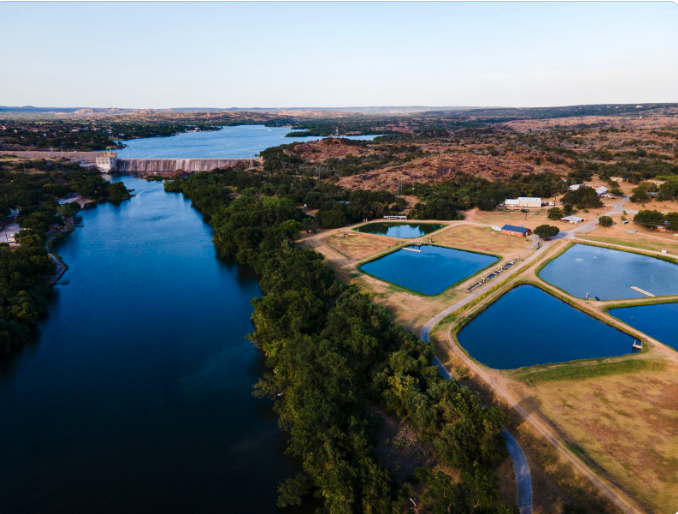Data centers are increasingly reliant on renewable energy to power their computer servers, but the rapidly expanding demand for data is pushing new data centers to look at every opportunity for efficiency. The fishing industry supplies nearly half of the world’s fish as well as approximately 200 million tons of discarded fish each year. Read on to learn more about how data centers and the fishing industry could benefit from a marriage of their unique assets.
The Problem
As new technologies come online and demand for data grows, data centers must continue to expand their capacity to store more and more data. This expansion in capacity requires an increase in power consumption at these centers, usually powered by the local electric grid. The problem with the current state of the data center industry is the massive energy consumption of data centers, which contributes significantly to greenhouse gas emissions. In the U.S., data centers account for 2% of the country’s energy consumption, or the equivalent of 10 nuclear reactors. Globally, data center energy consumption has jumped from 10 to 50% in the past decade, and the rate of growth is expected to accelerate.
Green Data Centers
Green data centers are becoming more prevalent as companies look for ways to reduce their carbon footprint. Green data centers often rely on renewable energy such as wind or hydroelectric power. One of the most promising avenues of green data centers is recycling the byproducts of the data center operations. This can include recycled water used in cooling towers, or recycled air filters. Recycled fish protein is a promising byproduct of the fishing industry that could be used to feed the servers in data centers. The future of the fishing industry is increasingly uncertain as fish populations plummet, so green data centers that repurpose the fish byproducts could help stabilize fishing stocks.
Recycled Fish Protein for Nutrition
Fish has long been a staple of diets around the world. The biologically-rich seas are an abundant source of protein, and fish is an important source of nutrition for billions of people. Fish is inherently sustainable as a food source, but an estimated 50% of global fish stocks are overfished. Using discarded fish byproducts for fish feed could help stabilize fish stocks, allowing fisheries to expand production and more people to access affordable and nutritious food. A recycled fish feed could be grown using aquaculture, a sustainable farming method that uses seawater instead of freshwater. Recycling fish byproducts for aquaculture feed could help reduce the use of fresh water for farming, which is becoming increasingly scarce.
Recycled Fish Oil for Fuel
Fish oil is a valuable source of marine-based omega-3 fatty acids that help reduce blood cholesterol, inflammation, and blood clotting. The popularity of fish oil supplements has made it a relatively inexpensive source of these essential fatty acids. Fish oil is also commonly used in aquaculture feed and is often a byproduct of fish processing. The refining process can generate substantial volumes of fish oil that could be recycled for use in renewable energy. Fish oil has already been used to run test engines, though it remains to be seen whether it can be used as a viable fuel source. The biggest challenge facing fish oil as a fuel source is finding a way to reduce the viscosity of the oil, which is around 100 times higher than conventional diesel.
Data Center Materials for Building Material
Many data centers are built using cement and other materials that require significant amounts of energy to produce. Data centers are built to be extremely durable and can last for decades, but their high carbon footprint makes them an unattractive source of sustainable building materials. Utilizing the cement inside these data centers for alternative building materials could reduce the demand for cement by data centers and help reduce the industry’s carbon footprint. Glass is also a common construction material in data centers, but it is difficult to reuse as a building material. Glass has high value as a commodity, so it is not economically feasible to reuse it as construction material.
Provenance and Traceability of Supply Chain
The fishing industry is highly centralized and vertically integrated, which often leads to poor working conditions, unsustainable practices, and unsustainable fish stocks. If the data center industry were to adopt the fishing industry’s vertically-integrated supply chain model, it could improve the traceability and transparency of supply chains. The data center industry is increasingly adopting renewable power sources and pursuing sustainability initiatives, so it would make sense for data centers to adopt a more centralized supply chain.
Conclusion
Today’s data centers are massive energy hogs, and that trend is expected to continue in the future. As data centers expand, the demand for electricity will grow, and the amount of carbon dioxide emitted by data centers will increase. To reduce their reliance on fossil fuels, data centers are investing in renewable energy, using recycled materials, and pursuing sustainability initiatives. The fishing industry has massive potential to contribute to these initiatives by recycling its byproducts and adopting a more centralized supply chain.
